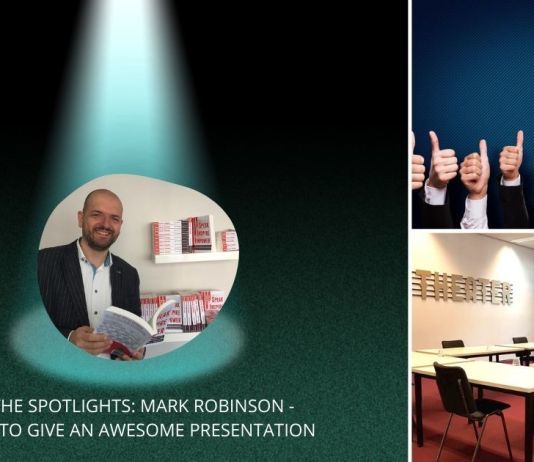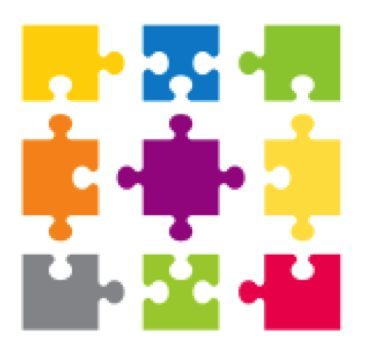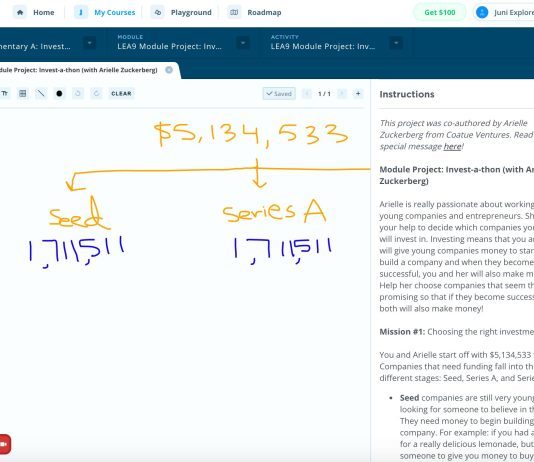Marcel van Marrewijk's Blog, page 10
April 22, 2021
What Are Algorithms & Why Are They Important
 What Is An Algorithm?
What Is An Algorithm?An algorithm is a set of step-by-step procedures, or a set of rules to follow, for completing a specific task or solving a particular problem. Algorithms are all around us. The recipe for baking a cake, the method we use to solve a long division problem, and the process of doing laundry are all examples of an algorithm. Here’s what baking a cake might look like, written out as a list of instructions, just like an algorithm:
Preheat the ovenGather the ingredientsMeasure out the ingredientsMix together the ingredients to make the batterGrease a panPour the batter into the panPut the pan in the ovenSet a timerWhen the timer goes off, take the pan out of the ovenEnjoy!Algorithmic programming is all about writing a set of rules that instruct the computer how to perform a task. A computer program is essentially an algorithm that tells the computer what specific steps to execute, in what specific order, in order to carry out a specific task. Algorithms are written using particular syntax, depending on the programming language being used.
Types of AlgorithmsAlgorithms are classified based on the concepts that they use to accomplish a task. While there are many types of algorithms, the most fundamental types of computer science algorithms are:
Divide and conquer algorithms – divide the problem into smaller subproblems of the same type; solve those smaller problems, and combine those solutions to solve the original problem.Brute force algorithms – try all possible solutions until a satisfactory solution is found.Randomized algorithms – use a random number at least once during the computation to find a solution to the problem.Greedy algorithms – find an optimal solution at the local level with the intent of finding an optimal solution for the whole problem.Recursive algorithms – solve the lowest and simplest version of a problem to then solve increasingly larger versions of the problem until the solution to the original problem is found.Backtracking algorithms – divide the problem into subproblems, each which can be attempted to be solved; however, if the desired solution is not reached, move backwards in the problem until a path is found that moves it forward.Dynamic programming algorithms – break a complex problem into a collection of simpler subproblems, then solve each of those subproblems only once, storing their solution for future use instead of re-computing their solutions.Example of an AlgorithmThere are a number of different algorithms, from simple to very complicated, that exist for solving a Rubik’s cube. Below is just one simple algorithm. First, let’s specify a notation to use (similar to picking a programming language).
Each of the six faces of a Rubik’s cube can be represented by the first letter of their name:
U – upD – downL – leftR – rightF – frontB – backEach face can be turned in three different ways/directions. Using U as an example, these are represented as:
U – clockwise quarter-turn of the upper faceU’ – counter-clockwise quarter-turn of the upper faceU2 – half turn in either direction of the upper faceNow, let’s go through the steps in the algorithm to solve a Rubik’s Cube. Feel free to grab one of your own and follow along!
Step 1: The CrossFirst, flip some edges so that there is a white cross on the upper face.Apply the following turns: F, R’, D’, R, F2, R’, U, R, U’, R’, R2, L2, U2, R2, L2.The cross is now solved.Step 2: The White CornersThe edges on the white face are now complete, but the corners remain.Depending on where the white-orange-green corner is in the puzzle, apply one of the following series of turns:Bottom: R’, D’, R, D (repeat until the corner moves to its correct place)Top: R’, D’, R, D (this moves the corner to the bottom; then, follow the above instructions)Step 3: Middle Layer EdgesFlip the cube so that the white is on the bottom.Look for an edge that is on the top face and doesn’t have yellow on it.Perform a U-turn so that the color on the front face of the edge matches with the center.Depending on the direction that the edge could go, apply one of the following series of turns:Left: U’, L’, U, L, U, F, U’, F’Right: U, R, U’, R’, U’, F’, U, F)Step 4: Yellow CrossApply the following turns, until a yellow cross on the face appears with the yellow center: F, R, U, R’, U’, F’.If there is an “L” shape, where the two yellow pieces showing are adjacent to each other, apply the following turns: F, U, R, U’, R’, F’.If there is a “Line” shape, which is horizontal, apply the following turns: F, R, U, R’, U’, F’.Step 5: Sune and AntisuneLook at the face with the yellow center.Depending on the below contingencies, apply one of the following series of turns:If there is only one oriented corner: R, U, R’, U, R, U2, R’ (repeat until the desired position is attained)There is one oriented corner and one right-facing corner: U2, R, U2, R’, U’, R, U’, R’Step 6: Finishing the puzzleLook for sets of “headlights” (two stickers of the same color in the same row, separated by a sticker of a different color).Depending on how many there are, apply one of the following series of turns:If there are a set of headlights on each side: R, U’, R, U, R, U, R, U’, R’, U’, R2Otherwise: R’, F, R’, B2, R, F’, R’, B2, R2Sorting AlgorithmsA sorting algorithm is an algorithm that puts elements of a list in a certain order, usually in numerical or lexicographical order. Sorting is often an important first step in algorithms that solves more complex problems. There are a large number of sorting algorithms, each with their own benefits and costs. Below, we will focus on some of the more famous sorting algorithms.
Linear sort: Find the smallest element in the list to be sorted, add it to a new list, and remove it from the original list. Repeat this until the original list is empty.Bubble sort: Compare the first two elements in the list, and if the first is greater than the second, swap them. Repeat this with every pair of adjacent elements in the list. Then, repeat this process until the list is fully sorted.Insertion sort: Compare each element in the list to all the prior elements until a smaller element is found. Swap these two elements. Repeat this process until the list is fully sorted.Where Algorithms are Used in Computer Science?Algorithms are used in every part of computer science. They form the field’s backbone. In computer science, an algorithm gives the computer a specific set of instructions, which allows the computer to do everything, be it running a calculator or running a rocket. Computer programs are, at their core, algorithms written in programming languages that the computer can understand. Computer algorithms play a big role in how social media works: which posts show up, which ads are seen, and so on. These decisions are all made by algorithms. Google’s programmers use algorithms to optimize searches, predict what users are going to type, and more. In problem-solving, a big part of computer programming is knowing how to formulate an algorithm.
Why are Algorithms Important to Understand?Algorithmic thinking, or the ability to define clear steps to solve a problem, is crucial in many different fields. Even if we’re not conscious of it, we use algorithms and algorithmic thinking all the time. Algorithmic thinking allows students to break down problems and conceptualize solutions in terms of discrete steps. Being able to understand and implement an algorithm requires students to practice structured thinking and reasoning abilities.
This article originally appeared on junilearning.com
The post What Are Algorithms & Why Are They Important appeared first on Seats2meet.
April 19, 2021
How to give an awesome presentation

Gastblog van Mark Robinson, author Speak Inspire Empower.
What makes a great presentation? Why, in contrast, are so many business presentations so boring? And how can you ensure your next presentation is clear, captivating and persuasive? By the time you’ve finished this short article, your presentation skills will already be way ahead of your peers – if you put what you learn into practice.
I’m probably the last person on Earth
who you’d expect to write an article on public speaking, let alone a whole book: I’m an introverted IT guy whose first presentation, at school, was a total disaster. In front of my whole class I spent two nervous minutes shaking and going completely white while speaking on my chosen subject: the Lockheed Blackbird aircraft. I hated every moment of that presentation and thought I’d never be able to speak in public.
Then something happened that completely changed my life.
I joined Remco Claassen’s “Verbal Mastery” workshop. There I realised that public speaking is a skill that anyone can learn. There are just a few techniques which, if you put them into practice, will enable you to give speeches in which people are hanging on your every word.
And not only speeches: many of these techniques work for written articles and even books. I’ve used a couple in this article – have you spotted them?
After learning these techniques, I practiced them for many years.
At the same time, I saw my colleagues struggle through their presentations, often resorting to reading PowerPoint slides to their audience. Yes, even really smart managers and engineers that I’m proud to call my colleagues read slides aloud to their equally smart audience. It’s like what happens at my daughter’s primary school: there they also have a “voorlees feest” (reading aloud party)!
I wanted to show how absurd this practice is – that there really is a better way. But how?
Then one day I had an idea: I gave a famous talk from the 20th century in the PowerPoint format. This proved such a hit when I first delivered it at ASML that I went on to give it at TEDxEindhoven.
A Book!
And now, after training 500 people from all backgrounds on public speaking over four years, I’ve put all my techniques into my book: Speak Inspire Empower: How To Give Persuasive Presentations To Boost Your Confidence And Career.
So, what were those two techniques I promised you? Have you spotted them? I’m using one of them three times in this paragraph – is that a clear enough clue?
The first technique is questions.
Question marks are shaped like a hook which is very appropriate because they hook into your listeners’ (or readers’) brains and draw their attention to you! Next time you stand in front of a group, try asking and answering questions in your presentation.
There are three types of questions you can use – watch my TEDx talk, “How to present to keep your audience’s attention”, to see them all. So what’s the second technique? (See what I did there?)
The second technique started right in the second paragraph.
It’s one that everyone loves but presenters all too often neglect. But if you use it, your presentations will become more memorable and enjoyable for your listeners. I’m talking about storytelling. People love stories: ask any parent with young children at bedtime! Again, if you want to know how to incorporate them, watch my TEDx talk.
These are just two topics. But what about starting your presentation? Or ending it? How should you structure your presentation? What about body language? How can you cope with nerves? And how can you deliver a persuasive talk?
For these tips and many more, order my book today!
Mark Robinson geeft al meer dan 20 jaar presentaties als onderdeel van zijn werk als softwareconsultant. Hoewel hij naar eigen zeggen geen natuurlijke presentator is, heeft hij goed leren presenteren van uitstekende presentatoren als Remco Claassen en zijn eigen vrouw en collega trainer Annelies. Hij is de auteur van Speak Inspire Empower.
Seats2meet Brabant vindt het fijn artikelen van gastbloggers een podium te geven, want wij zijn nu eenmaal geen standaard vergaderlocatie. Bezoek jij ook regelmatig een van onze locaties en heb je een artikel te delen of een online training? Let us know! Of wil je gewoon lekker onze artikelen in de nieuwsbrief lezen?
Wil je meer artikelen lezen?
– nieuws
En nog heeeeeel veel meer leuke artikelen én evenementen vind je op de sites van onze 2 andere locaties
Eindhovense blogs
Tilburgse blogs
Doe er je voordeel mee! Groet,
Helma Schellen, marketing Seats2meet (en ja, connecten is fijn)
The post How to give an awesome presentation appeared first on Seats2meet.
April 16, 2021
Het moet anders

Niemand past 100% op een functiebeschrijving, op een hokje
Dit wetende kan ik niet anders concluderen dat het anders moet. We organiseren op basis van theorie, de praktijk is een stuk weerbarstiger dan een verzameling hokjes in een organogram.
En het kan ook anders, heel simpel zelfs. Met mijn uitgebreide HR ervaring en uitgebreide ondernemerservaring heb ik een simpele & effectieve methodiek ontwikkeld, vanaf 2013 – om talent boven tafel te krijgen waardoor je als organisatie veel efficiënter kunt organiseren. Waardoor je het maximale uit mensen kunt halen én mensen het maximale uit zichzelf. Een echte win-win dus!
Deze methodiek heb ik de naam ‘Van hokjes naar puzzelstukjes’ gegeven, omdat dat de beweging is: de bevrijding van talent, uit de hokjes, want je medewerkers zijn puzzelstukjes! Zoek de verbinding op in de verschillen ipv als eilandjes naast elkaar fungeren…
Samen verspreiden
Ik ben inmiddels 8 jaar bezig dit gedachtengoed te verspreiden, door middel van lezingen, teamtrainingen, 1-op-1 coaching en met m’n laatste boek JA zeggen JA doen. Ik heb prachtige dingen zien gebeuren met mensen, met teams, met leidinggevenden. Het heeft ontzettend veel rijkdom opgeleverd, ik heb zoveel mensen tevoorschijn zien komen.
In de loop van de tijd heb ik ontdekt dat de methodiek nog veel meer doet dan talent bevrijden (wat ook al prachtig is)… het legt een hele nieuwe basis voor de samenwerking. Een fundament van vertrouwen, veiligheid en vertrouwen. Een duurzaam fundament.
Er is een duidelijke VOOR en NA situatie. Voor die tijd lopen er vaak allerlei dingen niet soepel in het team, in de organisatie. Er is gedoe. Misschien zelfs wel geroddel. Weinig begrip onderling. Kortom; een stroeve samenwerking. En dat komt de resultaten natuurlijk niet ten goede…
Wat er nodig is is een life-changing interventie. Een knip in de tijd. Een ervaring waar je nog lang op kunt doorbouwen met elkaar. Dat is precies wat dit is. Door de openheid die er ontstaat, gebeurt er iets magisch. Het opent zoveel mogelijkheden, die daarvoor bedekt waren (in de hokjes).
En nu komt het… ik popel om dit te verspreiden, maar dat kan ik niet alleen!
Alleen ga je sneller, samen kom je verder!
Voor dit doel heb ik een Train de Trainer progamma uitgewerkt (verfijnd, want in 2016 was ik ook al gestart met opleiden, maar door persoonlijke omstandigheden ben ik daarmee gestopt). Een half jaar om je de methodiek tot in de puntjes te leren doorgeven, om zelf het instrument te zijn, om te belichamen waar dit over gaat. Hoe opener jij voor de groep staat, hoe makkelijker de groep opent.
Voel je bij jezelf dat je hier meer van wil weten? Voel je je geroepen om mee te werken aan deze beweging? Plan een afspraak in m’n agenda in en dan vertel ik je er alles over!
Ik kijk er naar uit je te ontmoeten!
Met energieke groet,
Judith Webber

The post Het moet anders appeared first on Seats2meet.
Van hokjes naar puzzelstukjes – het moet anders

Niemand past 100% op een functiebeschrijving, op een hokje
Dit wetende kan ik niet anders concluderen dat het anders moet. We organiseren op basis van theorie, de praktijk is een stuk weerbarstiger dan een verzameling hokjes in een organogram.
En het kan ook anders, heel simpel zelfs. Met mijn uitgebreide HR ervaring en uitgebreide ondernemerservaring heb ik een simpele & effectieve methodiek ontwikkeld, vanaf 2013 – om talent boven tafel te krijgen waardoor je als organisatie veel efficiënter kunt organiseren. Waardoor je het maximale uit mensen kunt halen én mensen het maximale uit zichzelf. Een echte win-win dus!
Deze methodiek heb ik de naam ‘Van hokjes naar puzzelstukjes’ gegeven, omdat dat de beweging is: de bevrijding van talent, uit de hokjes, want je medewerkers zijn puzzelstukjes! Zoek de verbinding op in de verschillen ipv als eilandjes naast elkaar fungeren…
Samen verspreiden
Ik ben inmiddels 8 jaar bezig dit gedachtengoed te verspreiden, door middel van lezingen, teamtrainingen, 1-op-1 coaching en met m’n laatste boek JA zeggen JA doen. Ik heb prachtige dingen zien gebeuren met mensen, met teams, met leidinggevenden. Het heeft ontzettend veel rijkdom opgeleverd, ik heb zoveel mensen tevoorschijn zien komen.
In de loop van de tijd heb ik ontdekt dat de methodiek nog veel meer doet dan talent bevrijden (wat ook al prachtig is)… het legt een hele nieuwe basis voor de samenwerking. Een fundament van vertrouwen, veiligheid en vertrouwen. Een duurzaam fundament.
Er is een duidelijke VOOR en NA situatie. Voor die tijd lopen er vaak allerlei dingen niet soepel in het team, in de organisatie. Er is gedoe. Misschien zelfs wel geroddel. Weinig begrip onderling. Kortom; een stroeve samenwerking. En dat komt de resultaten natuurlijk niet ten goede…
Wat er nodig is is een life-changing interventie. Een knip in de tijd. Een ervaring waar je nog lang op kunt doorbouwen met elkaar. Dat is precies wat dit is. Door de openheid die er ontstaat, gebeurt er iets magisch. Het opent zoveel mogelijkheden, die daarvoor bedekt waren (in de hokjes).
En nu komt het… ik popel om dit te verspreiden, maar dat kan ik niet alleen!
Alleen ga je sneller, samen kom je verder!
Voor dit doel heb ik een Train de Trainer progamma uitgewerkt (verfijnd, want in 2016 was ik ook al gestart met opleiden, maar door persoonlijke omstandigheden ben ik daarmee gestopt). Een half jaar om je de methodiek tot in de puntjes te leren doorgeven, om zelf het instrument te zijn, om te belichamen waar dit over gaat. Hoe opener jij voor de groep staat, hoe makkelijker de groep opent.
Voel je bij jezelf dat je hier meer van wil weten? Voel je je geroepen om mee te werken aan deze beweging? Plan een afspraak in m’n agenda in en dan vertel ik je er alles over!
Ik kijk er naar uit je te ontmoeten!
Met energieke groet,
Judith Webber

The post Van hokjes naar puzzelstukjes – het moet anders appeared first on Seats2meet.
April 13, 2021
#2 – O! – Van Intentie naar ACTIE: 4 stappen om al je plannen WEL te laten slagen!

Heb je besloten dat je in 2021 weer succesvol gaat zijn?
Dat het je beste jaar ooit wordt?
Of denk je misschien … met al die Covid-maatregelen zie ik een zwaar jaar voor me liggen.
Maar ik ga er toch het beste van maken. Uiteraard!
Ik kan me beide antwoorden goed voorstellen. Wat je antwoord ook is ..
Mag ik je een misschien een vervelende vraag stellen?
Wat denk je diep van binnen?
>> Gaat het je dit jaar wel of niet lukken?
We zitten nog midden in het Covid-gedoe en de vraag blijft wanneer alles weer back-to-normal gaat.
En gaat dat überhaupt nog gebeuren? Want het is eerder een naar een nieuwe-normaal-gaan!
Of je nou ja of nee hebt geantwoord, één ding staat vast…. Je hebt MEER DAN een plan nodig.
De meeste mensen hebben echte goede voornemens.
Drive. Ideeën. Mooie ideeën. Zelfs plannen.
Maar .. er komt te vaak te weinig van terecht, misschien wel … niks.
Goede voornemens werken niet, alleen maar plannen maken ook niet.
Heb je een plan maar komt er te weinig van terecht? Ligt dat aan het plan of … ligt het misschien aan jou? #nietboosworden
Ik gaf zelf nog wel eens de omstandigheden de schuld.
Diep van binnen wist ik dat IK anders moest gaan doen.
Het kan anders. En het moet anders.
Het gaat om de uitvoering van je plannen.
Want …
Hoe maak je tijd in je agenda om extra te gaan sporten?
Hoe weet je of je op de goede weg bent met je onderneming?
Waar haal je de motivatie vandaan om gezonder te gaan eten?
Allemaal goede vragen!
En allemaal vragen die een antwoord verdienen. MAAR …
Het gaat niet om het plannen, het weten, en gezonder eten …
Het gaat erom DAT je het GAAT DOEN!
En onderstaande gaat je geheid helpen.
Want waarom gaat dat nou zo vaak mis?
>> Omdat we er veel te veel tijd overheen laten gaan.
“Ga ik morgen doen!”
Hoe vaak heb je dat al tegen jezelf gezegd?
Hoe meer tijd je laat verstrijken tussen je plannen en de uitvoering ervan, hoe minder INTENTIE er overblijft. Jim Rohn heeft dat in onderstaande afbeelding heel mooi verbeeld: met de tijd neemt het goede gevoel om je plan waar te maken, af.
Ik heb 4 stappen voor je om voor altijd die INTENTIE VAST TE HOUDEN en WEL je plannen te laten slagen!
Die methode heet LEAP (en is verzonnen door Michael Hyatt):
Lean into: Duik er helemaal in. Je hebt niet voor niets al langer het gevoel dat er wat moet gebeuren, je hoort dat stemmetje in je achterhoofd. ‘ik wil iets, er is verandering nodig’; gun jezelf dat je ervoor gaat. GO!
Engage: Neem je gevoel serieus, het zeurt niet voor niks al wat langer. Ga uitzoeken wat je te doen hebt, visualiseer je einddoel, omarm je gevoel en alles wat je ermee gaat bereiken.
Activate: Activeer jezelf, doe íets, zet de eerste (mini) stap. Stap niet in de valkuil om eerst je hele plan van A tot Z uit te dokteren…, dat is de grootste fout! Het gaat om de eerste stap. En daarna de vervolgstap. Het wordt vervolgens vanzelf duidelijk wat de volgende stap is.
Pounce: Dat betekent letterlijk bespringen, spring er bovenop, niet wachten, NU, go go go!
Je hebt dus een PLAN nodig én de INTENTIE om dat plan én te gaan maken én uit te voeren. Die intentie vasthouden is het lastigste en bovenstaande gaat je helpen.
Het is een mini stappenplan wat werkt – niet één of ander verzinsel maar een stappenplan wat ontzettend veel mensen volgen. En met succes!
Voorbeeld. Stel, jij besluit dat je wil weten of je op de goede weg bent met je onderneming, dan weet je dat je aan de gang moet. LEAP helpt je:
LEAN into – Je komt niet zomaar met die gedachte, kennelijk is er iets waardoor je dit wil, gun jezelf dat je dat mag voelen, gun jezelf om ermee aan de slag te gaan.
ENGAGE – hou dat gevoel vast en neem het serieus, omarm het. Je weet, wat de uitkomst ook is, het is een goed idee om hiermee aan de slag te gaan.
ACTIVATE – zet die eerste stap, doe een masterclass (bijvoorbeeld bij ons  ) en dokter niet alle stappen uit, laat het maar gebeuren, als je maar je doel voor ogen houdt.
) en dokter niet alle stappen uit, laat het maar gebeuren, als je maar je doel voor ogen houdt.
POUNCE – spring er bovenop, ga ermee aan de slag, NU, niet uitstellen, gewoon doen!
Ik weet zeker dat wanneer je NU besluit om – als is het maar 1 actie die je al die tijd hebt laten liggen – volgens LEAP aan de slag te gaan, dan heb je die actie/je plan zo in beweging en ligt het resultaat om de hoek. Echt!
Zover voor mijn tip voor deze week. 
Groet van Laura
PS Wil je meer tips en tricks voor jouw bedrijf? Meld je dan aan bij onze Facebook groep:
The post #2 – O! – Van Intentie naar ACTIE: 4 stappen om al je plannen WEL te laten slagen! appeared first on Seats2meet.
#1 – O! – 6 social media tips

Welkom bij de eerste editie van O! – een serie blogs voor ondernemers die (online) succes willen.
Wij vertellen jou in O! alles over online marketing, (online) sales, over ondernemen en organiseren. Door middel van diverse tips & tricks die jij meteen kan toepassen. Zo kan jij DIRECT aan de slag en til je jouw onderneming naar het volgende niveau.
Diverse experts delen in dit wekelijkse blog hun kennis over allerlei onderwerpen. Van het opzetten van een onderneming, tot en met het regelen van je administratie.
En natuurlijk over hoe je succesvol wordt met de belangrijkste functie van je onderneming: marketing! Alles komt aan bod.
Ik hoop dat je van alles wat we organiseren en maken energie krijgt!
Energie om te shinen. Je markt te veroveren. Je dromen waar te maken. Dat wij jou ideeën geven over hoe je je bedrijf én jezelf kan laten groeien.
We delen onze verhalen, de successen maar ook de missers – en geloof me, die missers zijn er hoor. Een ondernemer is ook maar een mens en wij zijn .. ondernemers!
Daarnaast delen we tools en tactieken, die we zelf ook gebruiken. Zo weten we dat deze ook geschikt kunnen zijn voor jou.
En zeker niet als laatst: we vertellen je over wat er bij anderen werkt.
We delen onze kennis met je aan de hand van onze 4 O’s:
– Online marketing
– Online sales
– Ondernemers skills
– Organiseren van je bedrijf en werk
Vandaag nodig ik je uit om te kijken naar je online marketing. Hoe richt je jouw social media kanaal goed in? Wat moet je wel én wat zeker niet doen.
Met de volgende 6 korte social media tips kan je direct aan de slag.
Tip 1 – Je wil jouw buyer persona bereiken. Check daarom diverse bronnen om erachter te komen op welke platformen jouw buyer persona zich bevindt. Newcom brengt elk jaar een social media onderzoek uit, waardoor jij in één oogopslag kan zien waar jouw doelgroep waarschijnlijk actief is. Zo kun je eerst de focus leggen op deze platformen!
Tip 2 – Stel doelen. Wat wil je precies met social media bereiken? Wil je meer mensen naar je website, wil je zichtbaarder worden online? Of wil je juist meer conversie? Voor elk doel is er een andere aanpak nodig. Kijk goed wat jij wil en welke acties je hiervoor moet inzetten, welke aanpak de beste is.
Tip 3 – Maak je profiel zo volledig mogelijk. Vermeld in ieder geval altijd je website en bij voorkeur je landingspagina. Zo kunnen jouw potentiële klanten bijvoorbeeld makkelijker jouw website vinden, waardoor de kans groter is dat ze converteren. De platforms zelf geven de voorkeur aan accounts waar alles netjes is ingevuld. Ontbreekt er info, dan word je minder snel getoond dan de accounts die wel alles op orde hebben.
Tip 4 – Zorg voor een professionele uitstraling. Gebruik je afbeeldingen? Zet ze in een template in de stijl van jouw bedrijf, bijvoorbeeld heel belangrijk op Instagram. Zo word jij herkenbaar, krijg je een herkenbaar “gezicht”. Als ze deze afbeelding zien, dan denken ze direct aan jou. Dat moet je hebben natuurlijk!
Tip 5 – Is jouw doel “meer conversie”, richt dan zeker de Facebook Shop in. Door dit te doen kun jij jouw aanbod op meerdere plekken laten stralen, ook op Facebook. Leuk om te doen en … zo wordt jouw aanbod gezien door je buyer persona. Facebook vindt het bovendien fijn als je dat doet, goed voor je zichtbaarheid!
Tip 6 – De analyse. Vergeet zeker niet te kijken naar jouw analytics op social media. Dit geeft je inzicht. Welk soort post vindt jouw buyer persona het best? Op wat voor soort post klikt jouw buyer persona het vaakst? Op welk kanaal bevindt jouw buyer persona zich écht. Door deze inzichten te hebben, maak je van jouw social media actie het succes wat je wil.
Met deze tips kun jij direct aan de slag. Maak een strategie voor jouw social media. Een strategie afgestemd op jouw buyer persona, jouw droomklanten. Wat willen zij nou écht zien?
In de volgende editie van O! Magazine gaan we uitgebreid in op de drie grootste ondernemersvalkuilen. We praten met zeer geslaagde ondernemers, die precies vertellen wat hun valkuilen waren. Zo hoef jij deze fouten niet meer te maken.
Echte verhalen, soms smeuïge verhalen maar vooral boordevol tips die je direct kan toepassen!
Heb je zelf vragen die je graag beantwoord wil hebben? Stel ze hier:
De O! niet missen? Voeg mijn e-mailadres (laura@funnelguru.nl) toe aan je adresboek!
Met dank en groet,
Laura Hamer
The post #1 – O! – 6 social media tips appeared first on Seats2meet.
How to Be an Outstanding Interviewer: 9 Effective Tips

As an interviewer, it’s your job to recognize the best talent, get the most out of every candidate, and help them truly show their potential. The candidates you’re interviewing might be shy, inexperienced, confused, or under stress. That doesn’t mean they’re not a huge potential and possibly a great fit. However, you’ll need to make sure you got the most out of them and helped them show their true capacity.
This means that you need to learn how to go from a good to an outstanding interviewer. There are tips and tricks you should start applying to all your future interviews, that will help you excel at your job. Below, we’ve created a list of the 9 most effective tips for an interviewer such as yourself. Let’s take a closer look.
1. Prepare Candidate InformationTo be able to talk to a candidate the right way, you need to make sure you know who you’re talking to and have the right background information.
In the first stage of the recruitment process, you’ve read dozens of resumes, motivational letters, and letters of recommendation. Now it’s time to brush up your memory.
So, before the interview starts, you should:
read candidate documentation once againcheck their referenceswrite notes about the candidatecheck their portfolio or work samplesYou can even print out this document and keep it at your desk during the interview. This will help you keep the important information available at all times during the interview.
So, don’t let yourself “wing it” and be thoroughly prepared for each candidate.
2. Prepare a List of QuestionsPreparing a list of questions should go without saying. But, here’s why it’s important to do it:
it’ll help you navigate the interview professionallyyou’ll have all points coveredyou’ll be able to compare different candidates’ answers to the same questionyou’ll be more efficientWithout previously prepared questions, you can easily forget to ask important questions, drift away, and waste your and your candidates’ time. Use WriteLoad if you need writing help, or someone with more experience to edit or proofread your official documentation before you submit it to your superiors. Prepare thoroughly for each interview and leave nothing out of your note, reports, and official documents.
3. Prepare Hypothetical SituationsApart from a list of straightforward questions, you should also try and test your candidates’ skills and resourcefulness on the spot. A list of hypothetical situations and tasks is a great resource for making your interview far more successful.
Here’s what we have in mind:
giving the candidate a task such as writing a title for a social media post or writing a press release on a hypothetical eventasking them a question such as “This is a hypothetical situation. How would you handle it?”This is one of the best ways of recognizing truly talented and deserving candidates, even when you’re recruiting from a larger talent pool. You can learn a lot about a candidate by observing how they’re thinking and developing a solution in their mind. Think of simple and straightforward tasks that will show you the skills you want to see in them.
4. Be Polite and WelcomingNow that you’ve got the questions and candidate information all set, it’s time to meet them in person. You should try and build a relaxed atmosphere to help candidates open up and show their best qualities.
Make sure to:
greet them politely and welcome them to the interviewintroduce yourself, and other people present in the roomprovide a brief introduction about how the interview will goAfter that, allow them to say a couple of words about themselves and start with the interview. Don’t ask them to talk too much without your guidance, since it may throw them off their track.
5. Create an Evaluation SystemEvaluating candidates in an unbiased manner should be your top priority. You don’t want your personal experience, opinions, or beliefs to intervene with someone’s shot of getting the job.
Therefore, you should create an evaluation system and apply it to all your candidates. You could score their answers on a scale e.g. from poor to excellent or from 1 to 5.
The important thing is that you:
evaluate the candidates using the same methodscreate a system that allows you to meaningfully compare their answersYou want to be able to look at different candidates’ results and rate their performance objectively.
Also, having such clear notes and an evaluation system will help you present your decision to your superiors, when necessary. If you think you need help with writing a report or any other type of content, read about MyDissertations to see what their support team has to offer. You’ll be able to write a better report, justify your call, and provide all the necessary documentation.
6. Actively Take NotesDuring an interview, a lot of things can happen. The candidate might say or do something that intrigues you or disappoints you. If you try to keep it all inside your head, it’ll get mixed up after a couple of interviews.
Therefore, make sure you develop a note-taking system that will help you record all the main impressions from the interview without too much trouble.
7. Be Ready to ImproviseYour prepared questions and your note-taking system should not be the only resources you’ll use during an interview. You also need to use your creativity and allow yourself to improvise.
So, here’s what you need to do (or not do):
don’t stick to your planned version of the interview blindly listen carefully to candidates’ answers and ask follow-up questionsbuild on to their answers and allow yourself to step away from the scripted versionYou have to be open to different directions in which the conversation might head, to learn as much as possible about each candidate. So, be ready to improvise and be spontaneous.
8. Address Potential ConcernsWhen you’re talking to your candidates, certain concerns might cross your mind. Their personality, skill set, career changes, experience, or anything else that defines them as a candidate might worry you in terms of doing the job properly.
Address this.
Don’t just think about it but ask open questions about overcoming potential obstacles that you think the candidates might have to face. Their answers might surprise, provide more insight, remove your doubts, or confirm them.
9. Let it SinkAfter you finish interviewing the candidates, don’t try and decide between them immediately. Instead, let it sink.
This is especially important if you have more candidates to interview for the same job position. Instead of making a quick judgment call, we suggest you:
finish with all the interviewslet it sink for an hour or a dayevaluate all candidates simultaneously using your notesThis will allow you to compare, jump from one to the other, and find the candidate that really stands out from the rest. And, that’s what your job is all about.
Final ThoughtsBeing an outstanding interviewer is not just about asking the right questions and making the candidates feel good. It’s also about finding a way to allow them to shine, speak their mind, show their qualities, and prove why they’re worth getting this job.
Use the 9 brilliant tips we’ve shared above to prepare for all your future interviews, and work your way to becoming an excellent interviewer.
The post How to Be an Outstanding Interviewer: 9 Effective Tips appeared first on Seats2meet.
April 8, 2021
Samen verschillend zijn (over de kracht van het verschil)

Er zit spanning op de titel van dit blog. Of beter gezegd: er zit een spanning tussen de woorden samen en verschillend. Samen associeert voor mij met ‘harmonie/hetzelfde’ en verschillend met ‘conflict/anders’. Tenminste zo werkt het voor mij. En alleen bij mijn eerste associatie, als ik er niet verder over nadenk.
Als ik er wel verder over nadenk dan gebeurt er iets anders. Dan blijkt dat samen en verschillend heel goed samen (!) kunnen gaan. Sterker nog: dat deze twee woorden een ijzersterke combinatie kunnen vormen. Hoe dat werkt?
Ontwikkelen doe je samenAls je iets wilt ontwikkelen of laten groeien dan lukt dat niet in je eentje. Zelfs als het gaat om je eigen ontwikkeling is het handig als je gebruik kunt maken van de kennis van anderen. Bijvoorbeeld door het lezen van boeken, het praten met andere mensen, het inroepen van hulp op allerlei vlak. Je gebruikt de hulp van (wat) anderen (bedacht hebben) om te spiegelen, je kennis uit te breiden en daarmee stappen te zetten, dingen te veranderen.
Als het gaat om de ontwikkeling van iets groters, bijvoorbeeld een team, een organisatie of nog groter: een samenleving, dan kom je nergens zonder anderen. Dat moet samen, want voor echte verandering heb je betrokkenheid en draagvlak nodig. Dus je zoekt het ‘samen’ op.
Samen is verschillendWat je automatisch bij ‘samen’ krijgt is: verschil. Want iedereen is verschillend. In meer of mindere mate, dat wel. Als de verschillen klein zijn dan is dat fijn (‘we lijken erg op elkaar vind je ook niet?’). Dus zoeken we elkaar op. Om samen op te gaan, als (min of meer) gelijkgestemden. Dan gaat samen lekker conflictloos, we zijn het over het algemeen wel eens. Het gaat zoals we verwachten. Het klopt en dat is fijn. Het stelt gerust.
Maar wat als de verschillen groter zijn? Dan wordt het voor veel mensen lastig. Het wordt dan moeilijker om de harmonie te bewaren (‘want iedereen wil iets anders’). Het gaat helemaal niet zoals we hadden verwacht. Deze situatie geeft onrust en daarmee kunnen de verschillen nog groter worden en zich zelfs halsstarrig vastzetten.
Onderzoek de verschillen en blijf niet aan de oppervlakteWat helpt om je weg te vinden uit zo’n situatie is de verschillen nader onderzoeken. In plaats van ze weg te poetsen. Nieuwsgierigheid is daarbij het belangrijkste hulpmiddel. Want hoe komt het dat de ander er anders over denkt dan jij? Wat zit daar achter, in de zin van: welke behoefte ligt er onder?
Als je verschillen écht wilt overbruggen dan is het belangrijk dat je voorbij de standpunten kijkt. Dat je probeert om te zien wat de waarde is van het standpunt. ‘Wat kan ik van jou leren?’ ‘Welke wijsheid schuilt er in jouw standpunt?’ Om dat te kunnen doen moet je je er voor open stellen dat elke mening van belang is, en dat besluiten alleen goed kunnen zijn als ze recht doen aan de onderliggende behoeften van zowel de ene als de andere partij.
Wat daarbij helpt is de diepte in gaan. Voor welke onderliggende behoefte is het standpunt een oplossing? Op welke vraag geeft het een antwoord. Als je dit diepgaand onderzoekt kom je er misschien wel achter dat je in de kern meer overeenkomsten hebt dan je dacht.
Een mooi voorbeeld hiervan zag ik tijdens een workshop van Myrna Lewis, de grondlegger van Deep Democracy. We waren met een grote groep, de wereld zat midden in de Syrische vluchtelingencrisis. De meningen over het wel of niet opnemen van vluchtelingen in Nederland waren zeer verdeeld. Onder begeleiding van Myrna kwamen we er achter dat we in de diepte de situatie allemaal heel erg spannend en verontrustend vonden. Dat we ons zorgen maakten over het effect van deze ontwrichtende oorlog. Dat besef zorgde voor een enorme verbinding. En het gesprek kreeg daardoor een andere, mildere toon. De verschillen waren niet weg, maar werden minder van belang. Er was meer onderling begrip. Een goede basis voor samen verder gaan.
Samen verschillend zijn. Is dat makkelijk? Nee. Is het mogelijk? Ja.
The post Samen verschillend zijn (over de kracht van het verschil) appeared first on Seats2meet.
April 7, 2021
Stilstand geeft (ook) ruimte

We leven in een uitdagende tijd. Ons bedrijf Seats2meet Amersfoort CS zit in zwaar weer. Sinds vorig jaar maart (met als uitzondering de maanden september en deel van oktober) zijn we volledig stil gevallen. De schulden lopen op en het gebrek aan perspectief zorgen voor een hele onzekere zware periode.
Maar het positieve is dat deze ‘stilstand’ ook ruimte gaf – uiteindelijk – voor iets nieuws. Ik schreef al langer een blog onder de titel ‘op hartstocht zijn’ en dit heeft een mooi vervolg gekregen: een online programma Op Hartstocht. Dit programma – dat ik met nog negen andere HartWijzers maakte – is een ontdekkingstocht voor mensen die meer vanuit hun hart willen leven. Het creëren (en organiseren) gaf me al zoveel energie.
Daarnaast startte ik een podcast over datzelfde thema. Het eerste idee was om alleen de negen HartWijzers te interviewen maar deze eerste ervaring met het opnemen van podcasts smaakt naar meer. Prachtig om van anderen te horen hoe zij ‘leven vanuit het hart’. Ook van deze gesprekken lichte mijn hart op. Hier ga ik dus zeker mee door.
Tot slot heb ik deze week ook de mogelijkheid voor 1 op 1 coaching ‘live’ gezet op mijn website. Samen een ochtend op hartstocht gaan om in de natuur. In de stilte en in de natuur opzoek naar de antwoorden van de hartenroerselen van dat moment.
Kortom, mijn hartstocht heeft de afgelopen maanden een extra dimensie gekregen en ik word daar ongelooflijk blij van! Dankbaar dat dit zo is gaan stromen in deze lastige tijd.
De onzekerheid rondom Seats2meet blijft weliswaar onverminderd groot en dat is heel lastig en zorgelijk. Het kost veel energie en maakt soms ook verdrietig. Maar gelukkig geven de nieuwe ‘hartstocht-activiteiten’ hieraan een heel fijn tegenwicht.
Hartegroet, Tianne
Meer informatie over mijn online programma Op hartstocht vind je op www.dehartschool.nl
Meer blogs op www.ophartstocht.nl
Of vind mijn podcast Op hartstocht op oa Spotify: https://open.spotify.com/show/06Z3Ev79lI49xIutLDh6uY?si=e1KCqT1RQ0yAg2aaHMJlxw
The post Stilstand geeft (ook) ruimte appeared first on Seats2meet.
March 31, 2021
Rethinking How Kids Learn Math

Juni Learning is excited to offer elementary-level mathematics courses:
Early Elementary (for 2nd and 3rd graders)Late Elementary (for 4th and 5th graders)These courses utilize a discovery-based and project-based learning approach. They encourage kids to find a love of math and empower students with the foundational skills and learning prowess they need to take on more advanced math courses and even the most math-intensive career fields.
In this post, you’ll learn what makes these courses so impactful, from our discovery-based learning approach to the process by which we select our outstanding instructors and pair them with students for 1-on-1 learning.
What Is Discovery-Based Learning?The premise of discovery-based learning is simple: students learn best when they are put at the center of acquiring and building knowledge. This is why our instructors use guided activities to unlock the mathematical intuitions that the student already possesses.
Through engaging, hands-on projects and guiding questions, students in our courses take the lead in learning new concepts. Meanwhile, the instructor takes the role of a guide, adding suggestions and correcting misconceptions as needed. By taking the student’s discoveries and applying them to concrete exercises and comprehensive projects, students become experts in each mathematical concept they discover.
In each of these courses, students will acquire and build the in-depth, conceptual knowledge they need to succeed in their more advanced mathematics courses and future career fields.
Why Should Students Take Our Elementary Mathematics Courses?The traditional classroom isn’t for everyone
Kids are often placed with 25 or more students in a traditional mathematics classroom and pushed to find the right answer to a given question. As a result, very early in their lives, students begin to see their mathematics skills as fixed: they’re either good or bad at math. With little space to enjoy the process of learning, most students disengage — never truly harnessing their mathematical potential.
Extracurricular mathematics programs often reinforce those sentiments. Rather than focusing on conceptual understanding, embedding elements of creativity, or hands-on activities, such programs use “skill and drill” learning. While fluency practice is a crucial component of developing mathematical skills, it is certainly not the only component.
Juni is re-imagining the learning processJuni Mathematics courses challenge the traditional narratives. We empower students to explore, think critically, and ask questions. Rather than merely categorizing an answer as right or wrong, we implore students to ask why.
By leading with these questions, our instructors give students the space to explore new concepts and create meaningful connections. Because of this crucial shift in perspective, our students find their Juni sessions opportunities for endless curiosity and possibilities.
Nurturing a student’s intrinsic motivation — their desire to learn because it is intrinsically gratifying rather than for a reward — sparks a life-long interest in learning that drives both academic and future career success. Offering a student a sense of autonomy and control in the learning process, exactly as discovery-based learning endeavors to do, is an excellent way to foster intrinsic motivation.
What Will Students Learn in Our Elementary Mathematics Courses?In Early Elementary, kids will gain a deep appreciation for sums, differences, multiplication, and division. They will discover how to represent and interpret data and how these necessary skills are applied to understand time, money, length, and other basic units. By the end of the course, they’ll have improved their confidence by mastering complicated topics like fractions and measurement.
Late Elementary lets kids delve even deeper into the applications of arithmetic. They’ll discover place values, rounding, and multi-digit multiplication and division. Kids will understand how to add, subtract, multiply, and divide fractions and decimals. They’ll even have the chance to work with lines, angles, shapes, and coordinate planes!
Students will be paired with instructors whose focus is to guide the student in articulating their learning, but kids will have the central role in building their mathematics knowledge by working through discovery activities, games, and hands-on projects.
Example: counting penguinsLet’s try one of these fun and engaging activities together. Go ahead and access this discovery activity. Your task is to count the number of penguins on your screen.
How did you do it? Did you start from one corner and count each penguin? Did you group them first?
Because each student is different, we anticipate that they may apply one of several strategies to this activity — just as you did — and we welcome that!
Students will use whatever method they find most intuitive to count the penguins while working alongside their private instructor. After giving students a few moments to engage in a productive struggle, their instructor will guide them towards grouping the penguins by 10s.
In this process, students build their number sense and realize that counting by grouping is highly effective. More importantly, students intuitively learn that 10 groups of 10 penguins will make 100 penguins in total! This skill builds toward adding larger numbers together and eventually forms a central understanding of multiplication.
It All Starts With the Best InstructorsWe’re so excited to release a set of mathematics courses that give students opportunities to explore the depths of their learning. This feat would not be possible, though, without our stellar instructors — each of whom was intentionally chosen and paired with students to maximize the students’ learning, comfort, and fun. Our instructors come from the world’s top universities, and we train them to work with all types of students.
Coupled with our discovery-learning curriculum, the 1:1 sessions between students and instructors make our program wonderfully unique. Students build a strong relationship with their instructor, who becomes their mentor as they progress through more challenging Juni mathematics courses.
Ready to Enroll Your Child?These courses give students a central role in discovering the joy and importance of mathematics, all under our instructors’ 1-on-1 guidance and adapted from Common Core State Standards.
Discovery-based learning gives kids the tools to feel empowered to drive them to succeed in their elementary school courses and future grade levels. If this sounds like an opportunity you want for your child, we encourage you to enroll them today.
This article originally appeared on junilearning.com.
The post Rethinking How Kids Learn Math appeared first on Seats2meet.



